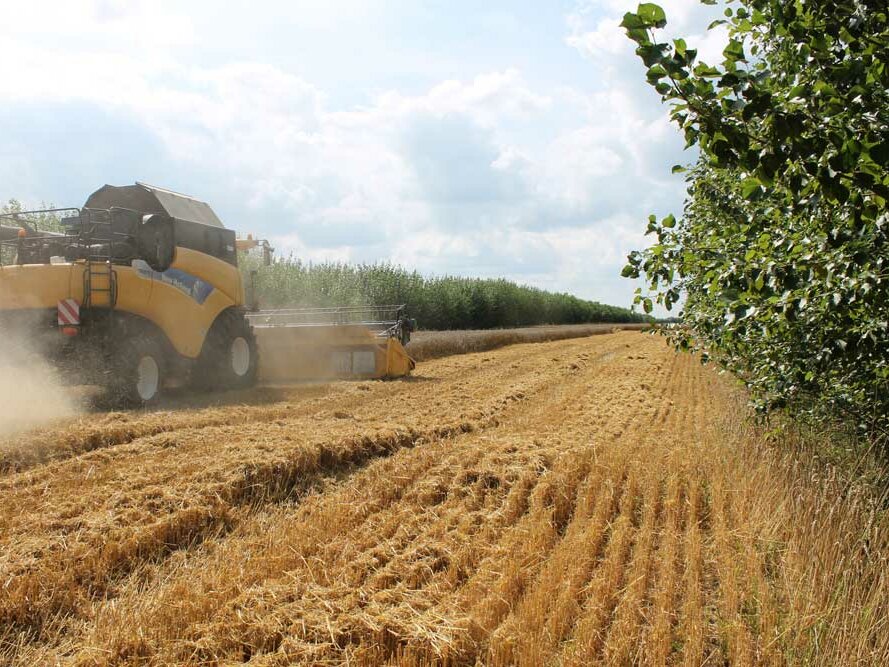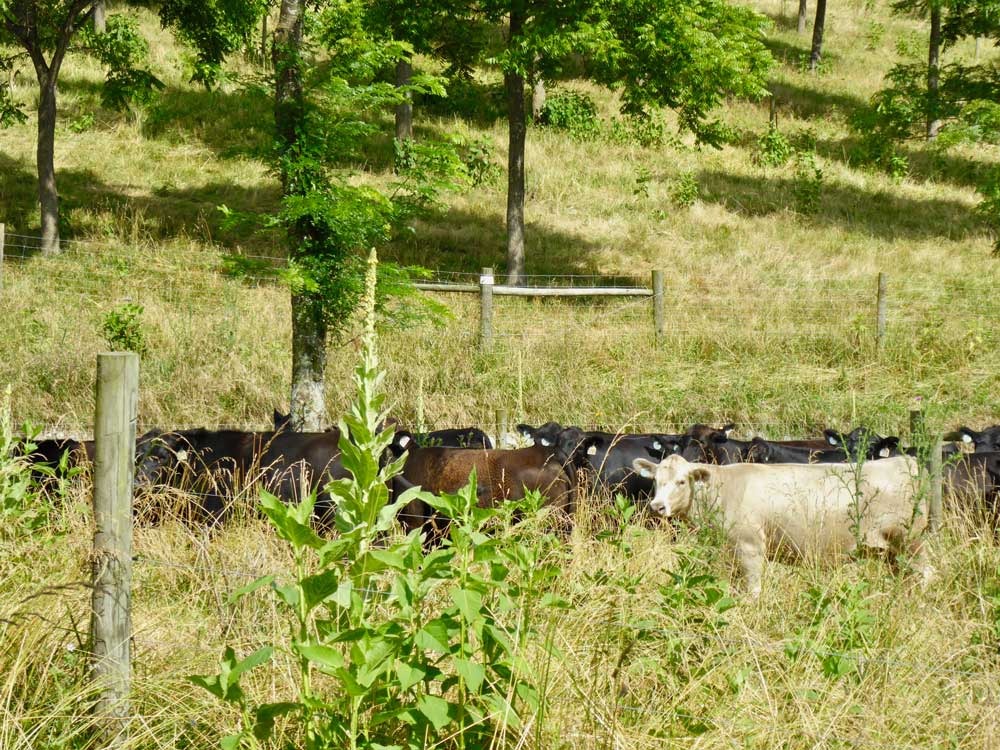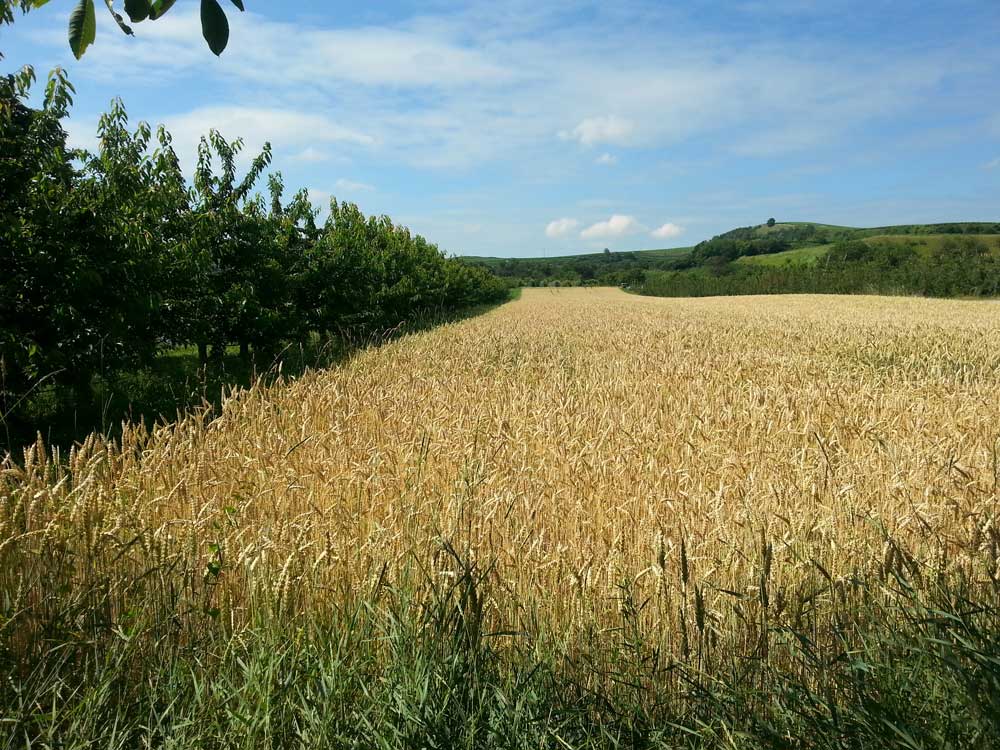Agroforestry: New potential for an old system
By Dr Christian Böhm, Brandenburg University of Technology (Brandenburgische Technische Universität), Cottbus-Senftenberg
Doubtless, many farmers have already heard of agroforestry. But what it actually entails is not widely known. Agroforestry might sound modern and innovative. In fact, it’s a farming system that’s been followed for centuries. We still see it in the cork oak plantations of southern Europe, in olive groves or the multi-storied »home gardens« tended by small-scale farmers in the tropics (e.g. Chagga home gardens). Agroforestry can also be seen in the hedges and tree-bordered fields, silvopasture and meadow orchards in many parts of Europe. Nowadays, climate change and recognised losses in biodiversity, as well as public demand for more protection of resources, mean interest in this form of land use is again growing.
Synergies
Fundamentally, agroforestry involves the planned establishment of trees/bushes integrated with land used for crop growing or livestock production. Depending on age, distribution and placement of the woody plants, there exists a broad spectrum of possible systems. Characteristic for all of them is the reciprocal influences between trees/bushes, field crops or farm animals. These can result in synergies offering clear advantages, when compared with single crop systems, in field productivity, climate adaptability, utilisation of resources and environmental effects.
An important characteristic of agroforestry is that the whole area concerned is involved in agricultural production. In other words, the land around the trees and/or bushes grows crops or pasture. This is an important difference to trees and field copses serving as landscape elements or especially protected by regional ordinance.
Woody strips
Agroforestry in Germany, for example, currently features modern, production-oriented systems with emphasis on type of timber grown, but also planting design so that mechanisation systems are easy to apply, i.e. consideration of machinery working widths. This means planting trees in lines offers particular efficiencies. Where distance between two woody strips is a multiple of a standard working width and sufficient turning room is left on the headlands at both ends, agroforestry areas can be farmed very time-efficiently. On the other hand, a higher input must still be calculated for such systems, especially with varying working widths. Experience so far indicates that around 5 % extra time and labour input is required. In other words, for an hour of cultivations on fields with woody strips, an extra three minutes should be factored in.
Selecting species
Choosing the woody plants, as well as the target age the trees are to reach, depends on the products that the farm business plans to market. In principle, any types of trees and bushes that thrive under central European conditions can be considered. Nowadays, though, there are legal restrictions that must be observed (see panel on page 81). Plans must also consider rotation period, the time between planting and harvesting the trees, mainly depending on the envisaged products such as fruit and timber. With the latter, the aim may be fast-growing trees for rapid production of biomass, or commercial timber or wood for the high-value market.
Productivity and climate
Agroforestry systems are characterised by high productivity. When all production is taken into account, the total as a rule exceeds that from a single crop on the same land. Output is measured by the so-called land equivalent ratio (LER) that describes the relative area required by a single crop to produce the same biomass output as that of a multi-crop or agroforestry system. If the LER is less than 1, then the single crop enterprise is more productive than agroforestry. Where the LER exceeds 1, the agroforestry approach is more productive. Behind the LER advantage for agroforestry is the influence the woody plants have on the overall microclimate through causing a marked reduction in wind velocities and thus lessening temperature extremes within the crop area. In this way, potential evapotranspiration is reduced, with more moisture then available.
Such agroforestry advantages are especially noticeable in dry seasons, or in low rainfall areas. In our graph, an example is demonstrated in the German region of South Brandenburg. This concerns a conventionally managed 40 ha area of agroforestry (soil points 45) farmed by the cooperative Forst e.G. Between two 10-metre wide strips of poplar trees (each strip including 1 m wide fencing area on both sides) are 50 m strips of field crop. Here, weather data were recorded at very short intervals and potential evapotranspiration measured daily. On the agroforestry areas in spring and summer, potential evapotranspiration proved markedly lower than that on the neighbouring field reference areas without tree strips. These differences were greatest in the crop margin areas and averaged approximately 25% overall. Associated very closely were the parameters evapotranspiration and wind velocity. Their reduction meant moisture availability for the crops in the field could be increased.
More moisture
The improved moisture availability also resulted in greater yields. With winter wheat, yield per ha was almost 16% more than on the reference (treeless) area whereby results followed the classical pattern of lowest yield differences on crop area margins because of higher competition, and highest grain yields further into the crop. In this example, the trees occupied approx. 17% of the field area whereby the remaining 83% produced a total yield only 4% less than the 100% reference area. Thus, the tree growing area was almost completely compensated for in terms of grain yield. On top of this comes the production from the trees. The poplars in this instance were estimated to be 20% higher on average compared with the situation in a classical poplar plantation. The reason: much more available light for the trees in the agroforestry system. These results gave an LER of 1.16 (the sum of 0.96 for wheat and 0.2 for poplars). This means that productivity from this agroforestry example is 16% higher than pure cropping. In fact, sugar beet under agroforestry on this site produced an LER of 1.23, a production increase over reference area of 23%.
In the EU therefore, agroforestry represents a very promising tool for helping farming cope with changing climatic conditions. The extent to which agroforestry systems influence crop output naturally depends on factors such as the weather, location yield potential, the crop grown and the distribution and management of the woody plants. For effective wind reduction while still ensuring sufficient light ingress, it is always advantageous to establish the wood growth in strips running north-south.
Environmental influences
Agroforestry systems are exceptionally multifunctional fulfilling, without additional input, many agriculturally desirable functions simultaneously (e.g. production of food/feed and biomass, protection from weather, stabilisation of soil, avoiding leaching into ground water, maintaining biological diversity and creating/retaining greater variation in cultural landscapes. These positive effects are confirmed by numerous scientific studies. There’s also direct contribution by agroforestry to protection against climate change because substantial amounts of CO2 are bound up by woody growth, both above and below the soil surface. Humus build-up is also a proven long-term result, especially in the vicinity of the woody strips, and this aids CO2 sequestration. And not least, greenhouse gas emissions are reduced through the very extensive management of the wood growing areas in the cropland.
Avoiding erosion
Woody strips across field slopes substantially reduce erosion through water flow and are outstandingly efficient in controlling wind erosion. Recordings reliably demonstrate that erosion-relevant wind velocities can be reduced almost completely, depending on tree height and woody growth density.
Ground water protection is another role for agroforestry. Through the rooting habit of trees and shrubbery, nutrients from deeper soil strata can be reached. Simultaneously, the roots have a filter function which can also be especially useful around bodies of water by substantially reducing leaching of nutrients and soil into surface water.
Boosting biodiversity
Nowadays we witness in many areas a steady, substantial increase in field size and/or removal of fences and hedges. Agroforestry systems offer the possibility of continuing to utilise entire fields while also markedly increasing the structural variety in the farming landscape. In particular, the alternating of crop and woody strips across fields substantially increases the proportion of borderlines: strip edges or perhaps transitional habitat of great ecological importance. All this has a positive influence on biospheres and therefore biodiversity. Strips of wildflowers along the margins of woody growth lines additionally increase the value for biological diversity without incurring any great crop yield penalties.
Extending agroforestry
In general, managing agroforestry systems is more complex than producing separate single crops. One result is that much more advice is needed. For a start, farmers often lack experience in agroforestry. There are also legal problems to be considered and this can be time-consuming. The result is that agroforestry can be at first less attractive to many farmers. But the challenges of the last years - especially the increase in dry periods – have sharpened interest. In Germany, for example, there has been a spate of new agroforestry systems established in the last five years. More are currently in planning. Definitely needed is a network of demonstration areas for effective distribution of increased knowledge and experience. There’s also a requirement for a marked intensification of research in this direction.
EU recognition
The European Union recognises its great potential. Among the factors reflecting this is agroforestry’s introduction as approved measure in the regulations covering »Land use systems of interest from an environment protection aspect«. Agroforestry systems are also identified in the pages of the EU Commission »Green Deal« Communication as ways of making agriculture more ecological, and also mentioned in the EU Biodiversity Strategy for 2030. On top of all this, the 2019 IPCC Special Report on Climate Change and Land also introduced agroforestry as a suitable and cost-effective measure for more climate protection, climate adaptation and food security.






